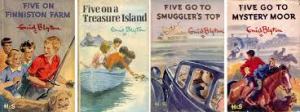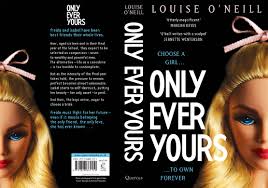I've been thinking about Irish children's publishing this week. After reading Oisin McGann's excellent blog on the subject I decided I too have something to say on the matter. O'Brien Press, our largest and most important children's publishers previously received e63,000 which has been cut in 2015 to e10,000. I have posted some Arts Council funding figures below (which are in the public domain) which may be of interest. The Arts Council should themselves be supported by our government. They do an important job and Sarah Bannan, Head of Literature, fights tirelessly for books. But at the moment we all need to fight for children's books, together. I think it's vital to support Irish children's publishing for the following reasons:
I grew up (in the 1970s) reading books mainly about British and American children. Yes, there were books by Patricia Lynch and Eilis Dillion and a couple by Walter Macken, but that was pretty much it. When I started writing as a child I populated my own stories with red letter boxes and ginger beer. Modern children are lucky – they see themselves reflected on the pages of their (Irish published) books. Family stories set in Limerick (Judi Curtin), gritty teen novels set in Northern Ireland (Sheena Wilkinson). They learn about Irish history on the pages of Under the Hawthorne Tree. (Children are 22 times more likely to remember a story than fact – and the editors at O’Brien are particularly good at discovering and promoting new historical fiction for children – Nicola Pierce is a wonderful talent who they have nurtured carefully.)
In Irish published books children read dialogue that sounds Irish and all this is reflected in their own writing. I have visited schools all over the country with the excellent Writers in Schools scheme and often they learn to read using Irish published books from the O’Brien Press Panda series. They love the fact that these are Irish books, with an Irish sense of humour, like Danny’s Teeth.
If O’Brien Press is not properly supported, if their hugely knowledgeable editorial staff are not kept on (and I know they have had to make staff cuts in the past), then Irish children will suffer, the future readers and writers of this country.
I have worked with many different publishing houses over the past twenty years, in Ireland, the UK, the US and further afield and I know from experience how good the team at O’Brien are. Their editorial skills in particular are second to none. They really care about their writers and their books. I publish with them as well as international companies because I believe that Irish children should have access to Irish written, illustrated and published books. My recent book with O’Brien Press, Sally Go Round the Stars, makes traditional Irish nursery and playground rhymes available to a new generation of parents and young children. This book would not have been published by any other publisher. O’Brien Press took a huge risk bringing it out, but it paid off and has been very popular with Irish parents and their young children.
I believe that the right book in the right child’s hand at the right time can change a life. We need to provide every child in Ireland with access to excellent Irish published books that they can connect with and fall in love with. I for one do not want to live in a country without its own indigenous children’s publishing.
Yours in books,
Sarah
Funding from the Arts Council for some of the Irish publishers is below.
To look at the Arts Council funding (publishing and other areas of the arts) in more detail see here - a link to the funding area on their website.
Regular Funding 2014 (2015 decisions not yet public)
Carysfort Press
€10,000
Clo Iar Chonnachta-Teo
€70,000
Cois Life Teo
€33,500
Dedalus Press
€77,500
Little Island
€43,500
Salmon Poetry
€40,750
The Gallery Press
€150,000
The Stinging Fly
€53,000
Regularly Funded Organisations 2014 (2015 decisions not yet public)
Lilliput Press
€65,500
New Island Books
€72,000
Annual Programming Grant 2014 (no Programming Grants for 2015)
O'Brien Press
€63,000
(cut to €10,000 for 2015)
Publications Title by Title Scheme 2014
Arlen House
€10,000
Dalkey Archive Press
€14,250
Doire Press
€3,530
Futa Fata
€9,000
Leabhar Breac
€9,000
Mercier Press
€10,000
Tramp Press
€10,000






![IMG_4461[1]](https://images.squarespace-cdn.com/content/v1/58973315e4fcb5808a5b7d9e/1486377412374-N4FMM3IJPGA4FLHE08KP/img_44611-e1413837064268.jpg)
![IMG_4462[1]](https://images.squarespace-cdn.com/content/v1/58973315e4fcb5808a5b7d9e/1486377412203-07N7T8NBY0IYO743L4IH/img_44621-e1413837089589.jpg)





































